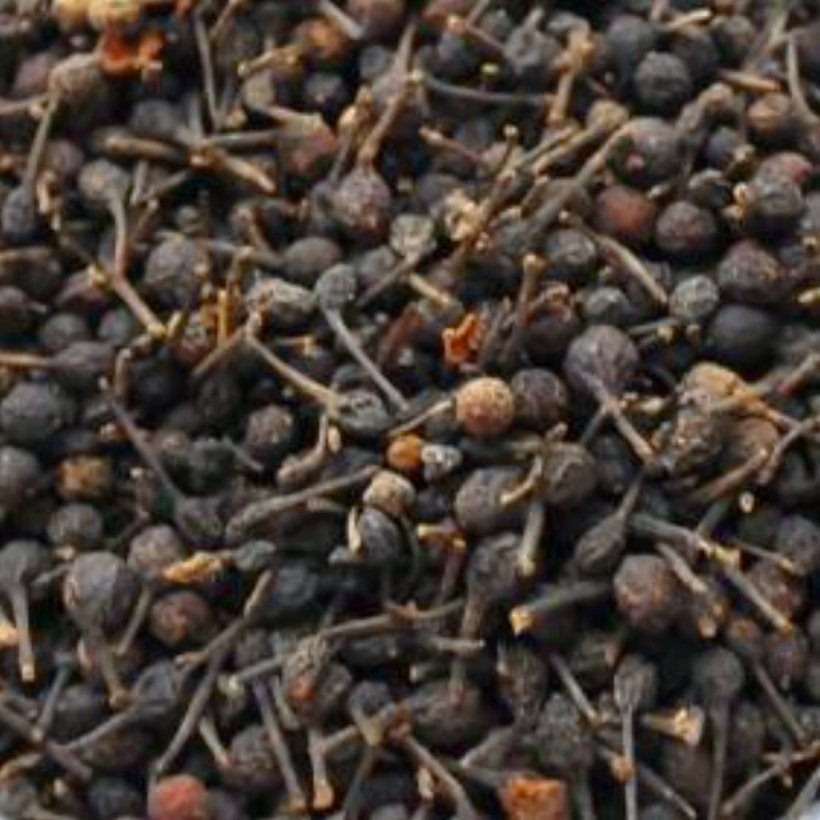Cinnamon (/ˈsɪnəmən/ SIN-ə-mən) is a spice obtained from the inner bark of several tree species from the genus Cinnamomum. Cinnamon is used mainly as an aromatic condiment and flavoring additive in a wide variety of cuisines, sweet and savoury dishes, breakfast cereals, snackfoods, and traditional foods. The aroma and flavor of cinnamon derive from its essential oil and principal component, cinnamaldehyde, as well as numerous other constituents, including eugenol.

Etymology
The term “cinnamon” also refers to its mid-brown colour. Cinnamon is the name for several species of trees and the commercial spice products that some of them produce. All are members of the genus Cinnamomum in the family Lauraceae. Only a few Cinnamomum species are grown commercially for spice. Cinnamomum verum is sometimes considered to be “true cinnamon”, but most cinnamon in international commerce is derived from related species, also referred to as “cassia”. The English word “cinnamon”, attested in English since the 15th century, derives from the Greek κιννάμωμον kinnámōmon (later kínnamon), via Latin and medieval French intermediate forms. The Greek was borrowed from a Phoenician word, which was similar to the related Hebrew קינמון (qinnamon).]The name “cassia”, first recorded in English around AD 1000, was borrowed via Latin and ultimately derives from Hebrew q’tsīʿāh, a form of the verb qātsaʿ, “to strip off bark”.
Early Modern English also used the names canel and canella, similar to the current names of cinnamon in several other European languages, which are derived from the Latin word cannella, a diminutive of canna, “tube”, from the way the bark curls up as it dries.

History
This section needs additional citations for verification. Please help improve this article by adding citations to reliable sources. Unsourced material may be challenged and removed. (February 2017) (Learn how and when to remove this template message)
Ancient history
Cinnamon has been known from remote antiquity. It was imported to Egypt as early as 2000 BCE, but those who report it had come from China confuse it with cassia. Cinnamon was so highly prized among ancient nations that it was regarded as a gift fit for monarchs and even for a god; a fine inscription records the gift of cinnamon and cassia to the temple of Apollo at Miletus. Though its source was kept mysterious in the Mediterranean world for centuries by the middlemen who handled the spice trade, to protect their monopoly as suppliers, cinnamon is native to India, Sri Lanka, Bangladesh, and Myanmar.
The first Greek reference to kasia is found in a poem by Sappho in the seventh century BCE. According to Herodotus, both cinnamon and cassia grew in Arabia, together with incense, myrrh, and labdanum, and were guarded by winged serpents.

Egyptian recipes for kyphi, an aromatic used for burning, included cinnamon and cassia from Hellenistic times onward. The gifts of Hellenistic rulers to temples sometimes included cassia and cinnamon. In ancient Egypt, cinnamon was used to embalm mummies.
Cinnamon was brought around the Arabian peninsula on “rafts without rudders or sails or oars”, taking advantage of the winter trade winds. Pliny the Elder also mentions cassia as a flavouring agent for wine.
According to Pliny the Elder, a Roman pound (327 grams (11.5 oz)) of cassia, cinnamon, or serichatum cost up to 300 denarii, the wage of ten months’ labour. Diocletian’s Edict on Maximum Prices from 301 AD gives a price of 125 denarii for a pound of cassia, while an agricultural labourer earned 25 denarii per day. Cinnamon was too expensive to be commonly used on funeral pyres in Rome, but the Emperor Nero is said to have burned a year’s worth of the city’s supply at the funeral for his wife Poppaea Sabina in AD 65.
Malabathrum leaves (folia) were used in cooking and for distilling an oil used in a caraway sauce for oysters by the Roman gourmet Gaius Gavius Apicius. Malabathrum is among the spices that, according to Apicius, any good kitchen should contain.

Middle Ages
Through the Middle Ages, the source of cinnamon was a mystery to the Western world. From reading Latin writers who quoted Herodotus, Europeans had learned that cinnamon came up the Red Sea to the trading ports of Egypt, but where it came from was less than clear. When the Sieur de Joinville accompanied his king to Egypt on crusade in 1248, he reported – and believed – what he had been told: that cinnamon was fished up in nets at the source of the Nile out at the edge of the world (i.e., Ethiopia). Marco Polo avoided precision on the topic. Herodotus and other authors named Arabia as the source of cinnamon: they recounted that giant cinnamon birds collected the cinnamon sticks from an unknown land where the cinnamon trees grew and used them to construct their nests, and that the Arabs employed a trick to obtain the sticks. Pliny the Elder wrote in the first century that traders had made this up to charge more, but the story remained current in Byzantium as late as 1310.
The first mention that the spice grew in Sri Lanka was in Zakariya al-Qazwini’s Athar al-bilad wa-akhbar al-‘ibad (“Monument of Places and History of God’s Bondsmen”) about 1270. This was followed shortly thereafter by John of Montecorvino in a letter of about 1292.

Indonesian rafts transported cinnamon directly from the Moluccas to East Africa (see also Rhapta), where local traders then carried it north to Alexandria in Egypt. Venetian traders from Italy held a monopoly on the spice trade in Europe, distributing cinnamon from Alexandria. The disruption of this trade by the rise of other Mediterranean powers, such as the Mamluk sultans and the Ottoman Empire, was one of many factors that led Europeans to search more widely for other routes to Asia.
Early modern period
During the 1500s, Ferdinand Magellan was searching for spices on behalf of Spain, and in the Philippines found Cinnamomum mindanaense which was closely related to C. zeylanicum, the cinnamon found in Sri Lanka. This cinnamon eventually competed with Sri Lankan cinnamon, which was controlled by the Portuguese.[21]
In 1638, Dutch traders established a trading post in Sri Lanka, took control of the manufactories by 1640, and expelled the remaining Portuguese by 1658. “The shores of the island are full of it,” a Dutch captain reported, “and it is the best in all the Orient. When one is downwind of the island, one can still smell cinnamon eight leagues out to sea.” The Dutch East India Company continued to overhaul the methods of harvesting in the wild and eventually began to cultivate its own trees.
In 1767, Lord Brown of the British East India Company established Anjarakkandy Cinnamon Estate near Anjarakkandy in the Cannanore district of Kerala; it became Asia’s largest cinnamon estate. The British took control of Ceylon from the Dutch in 1796.

Cultivation
Cinnamon is an evergreen tree characterized by oval-shaped leaves, thick bark, and a berry fruit. When harvesting the spice, the bark and leaves are the primary parts of the plant used.Cinnamon is cultivated by growing the tree for two years, then coppicing it, i.e., cutting the stems at ground level. The following year, about a dozen new shoots form from the roots, replacing those that were cut. A number of pests such as Colletotrichum gloeosporioides, Diplodia spp., and Phytophthora cinnamomi (stripe canker) can affect the growing plants.
The stems must be processed immediately after harvesting while the inner bark is still wet. The cut stems are processed by scraping off the outer bark, then beating the branch evenly with a hammer to loosen the inner bark, which is then pried off in long rolls. Only 0.5 mm (0.02 in) of the inner bark is used;[citation needed] the outer, woody portion is discarded, leaving metre-long cinnamon strips that curl into rolls (“quills”) on drying. The processed bark dries completely in four to six hours, provided it is in a well-ventilated and relatively warm environment. Once dry, the bark is cut into 5- to 10-cm (2- to 4-in) lengths for sale. A less than ideal drying environment encourages the proliferation of pests in the bark, which may then require treatment by fumigation. Fumigated bark is not considered to be of the same premium quality as untreated bark.
Species
Cinnamomum cassia (cassia or Chinese cinnamon, the most common commercial type)
C. burmannii (Korintje, Padang cassia, or Indonesian cinnamon)
C. loureiroi (Saigon cinnamon, Vietnamese cassia, or Vietnamese cinnamon)
C. verum (Sri Lanka cinnamon or Ceylon cinnamon)
C. citriodorum (Malabar cinnamon)
C. tamale (Indian cinnamon)
Cassia induce a strong, spicy flavour and is often used in baking, especially associated with cinnamon rolls, as it handles baking conditions well. Among cassia, Chinese cinnamon is generally medium to light reddish brown in colour, hard and woody in texture, and thicker (2–3 mm (0.079–0.118 in) thick), as all of the layers of bark are used. Ceylon cinnamon, using only the thin inner bark, has a lighter brown colour, a finer, less dense and more crumbly texture. It is considered to be subtle and more aromatic in flavour than cassia and it loses much of its flavour during cooking.
Levels of the blood-thinning agent coumarin in Ceylon cinnamon are much lower than those in cassia.
The barks of the species are easily distinguished when whole, both in macroscopic and microscopic characteristics. Ceylon cinnamon sticks (quills) have many thin layers and can easily be made into powder using a coffee or spice grinder, whereas cassia sticks are much harder. Indonesian cinnamon is often sold in neat quills made up of one thick layer, capable of damaging a spice or coffee grinder. Saigon cinnamon (C. loureiroi) and Chinese cinnamon (C. cassia) are always sold as broken pieces of thick bark, as the bark is not supple enough to be rolled into quills.
The powdered bark is harder to distinguish, but if it is treated with tincture of iodine (a test for starch), little effect is visible with pure Ceylon cinnamon, but when Chinese cinnamon is present, a deep-blue tint is produced.

Flavour, aroma, and taste
The flavour of cinnamon is due to an aromatic essential oil that makes up 0.5 to 1% of its composition. This essential oil is prepared by roughly pounding the bark, macerating it in sea water, and then quickly distilling the whole. It is of a golden-yellow colour, with the characteristic odour of cinnamon and a very hot aromatic taste. The pungent taste and scent come from cinnamaldehyde (about 90% of the essential oil from the bark) and, by reaction with oxygen as it ages, it darkens in colour and forms resinous compounds.
Cinnamon constituents include some 80 compounds, including eugenol found in the oil from leaves or bark of cinnamon trees.
Traditional medicine
Cinnamon has a long history of use in traditional medicine. It has been tested in a variety of clinical conditions, such as bronchitis or diabetes, but there is no scientific evidence that consuming cinnamon has any health benefits.

Toxicity
Further information: Coumarin
In 2008, The European Food Safety Authority considered toxicity of coumarin, a significant component of cinnamon, and confirmed a maximum recommended tolerable daily intake (TDI) of 0.1 mg of coumarin per kg of body weight. Coumarin is known to cause liver and kidney damage in high concentrations and metabolic effect in humans with CYP2A6 polymorphism.] Based on this assessment, the European Union set a guideline for maximum coumarin content in foodstuffs of 50 mg per kg of dough in seasonal foods, and 15 mg per kg in everyday baked foods.
According to the maximum recommended TDI of 0.1 mg of coumarin per kg of body weight, which is 5 mg of coumarin for a body weight of 50 kg: